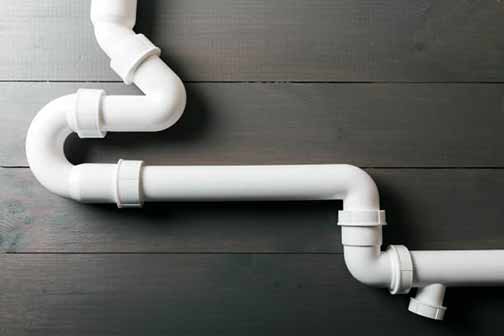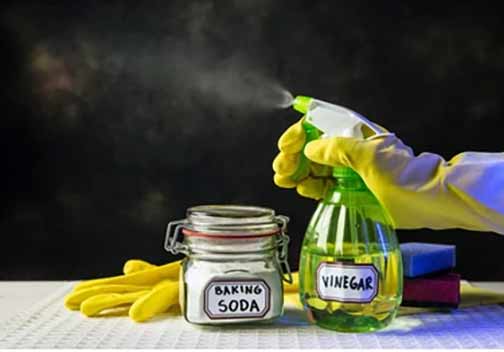
Home plumbing is an integral component of any residential infrastructure, ensuring the seamless provision of water supply and waste disposal. It encompasses an intricate network of pipes, fixtures, and appliances that work in harmony to maintain a functional and comfortable living environment. A fundamental understanding of home plumbing is crucial for homeowners to identify potential issues early, thereby saving time, money, and inconvenience associated with extensive repairs.
The home plumbing system can be broadly categorized into two primary systems: the water supply system and the drainage system. The water supply system is responsible for delivering fresh water to various fixtures and appliances within the home, while the drainage system efficiently removes wastewater. Both systems are interconnected, and any malfunction in one can significantly impact the other.
Identifying Common Sewer and Drain Issues: Early Detection and Prevention
Sewer and drain issues are prevalent problems that can disrupt the functionality of a home’s plumbing system. These issues often manifest as slow drains, unpleasant odors, or water backups. Recognizing these signs early is vital in preventing minor inconveniences from escalating into major plumbing emergencies.
Common sewer and drain issues include clogs, leaks, and pipe damage. Clogs are typically caused by the accumulation of debris such as hair, soap scum, grease, and food particles in the pipes. Leaks may occur due to corrosion, joint failure, or physical damage to the pipes. Pipe damage can result from external factors such as tree root intrusion or ground movement. Early detection and prompt action are key to mitigating these issues.
Spotting Early Signs of Sewer Problems: Key Indicators to Watch For
Spotting early signs of sewer problems is crucial in preventing costly repairs and maintaining a healthy plumbing system. One of the primary indicators is a persistent foul odor emanating from drains or around the house. This smell is often due to a blockage or break in the sewer line, allowing sewer gases to escape into the home.
Another sign of sewer problems is slow drainage, which can indicate a clog in the sewer system. If multiple fixtures, such as sinks, toilets, and showers, are draining slowly or backing up simultaneously, it might be a sign of a larger sewer line issue. Gurgling sounds in the pipes or toilets and water pooling around floor drains are also indicative of potential sewer problems.
Understanding the Causes of Drain Blockages: Prevention and Solutions
Drain blockages can occur for various reasons, including the buildup of grease, hair, soap scum, or foreign objects. Over time, these materials accumulate in the pipes, restricting water flow and leading to clogs. Tree roots can also invade sewer lines, causing blockages and potential pipe damage. Understanding these causes is essential for homeowners to take preventive measures and keep their drains clear.
Grease and oil, when poured down the sink, can solidify and adhere to the pipe walls, eventually leading to blockages. Hair and soap scum can accumulate in bathroom drains, while food particles and debris can clog kitchen sinks. Foreign objects, such as toys or sanitary products, can also cause significant blockages if accidentally flushed down toilets. Tree roots, attracted to the moisture in sewer lines, can infiltrate and damage pipes, resulting in severe blockages and leaks.

Preventive Measures for Maintaining Healthy Drains: Practical Tips and Techniques
Maintaining healthy drains involves regular cleaning and mindful usage to prevent clogs and ensure optimal functionality. Homeowners can employ natural solutions like baking soda and vinegar to clean drains and prevent buildup. These substances react to create a fizzing action that helps dislodge debris and clear the pipes.
Installing drain screens can help catch hair and debris before they enter the pipes, reducing the risk of clogs. Additionally, avoiding pouring grease or large food particles down the sink can minimize the likelihood of blockages. Regularly flushing drains with hot water can also help dissolve grease and prevent accumulation. Educating household members on proper waste disposal and drain usage is crucial in maintaining a healthy plumbing system.
When to Call a Professional Plumber: Recognizing the Need for Expert Intervention
While some plumbing issues can be resolved with DIY methods, others require the expertise of a professional plumber. If there is a persistent foul odor, multiple slow drains, or visible water damage, it’s time to call a plumber. Professionals have the tools and experience to diagnose and repair complex plumbing issues effectively.
Professional plumbers can conduct thorough inspections to identify underlying issues that may not be apparent to homeowners. They can use advanced tools such as cameras to inspect sewer lines and pinpoint the exact location of blockages or damage. In cases of severe clogs, leaks, or pipe damage, professional intervention is necessary to ensure a safe and effective resolution.
The Importance of Regular Plumbing Inspections: Proactive Maintenance for Longevity
Regular plumbing inspections are an essential aspect of maintaining a functional and efficient home plumbing system. A professional plumber can assess the condition of pipes, check for leaks, and ensure that the sewer and drainage systems are functioning correctly. These inspections can save homeowners from unexpected repairs and extend the lifespan of their plumbing system.
During an inspection, a plumber can identify potential issues such as corrosion, joint failure, or pipe damage before they escalate into major problems. Regular inspections also provide an opportunity to assess the efficiency of fixtures and appliances, ensuring they meet current standards and are not contributing to water wastage. By addressing minor issues promptly, homeowners can avoid costly repairs and maintain the integrity of their plumbing system.
Embracing Sustainable Plumbing Practices: Eco-Friendly Solutions for Modern Homes
Sustainable plumbing practices not only benefit the environment but also enhance the efficiency of the home plumbing system. Simple measures like detecting and fixing leaks promptly, installing low-flow fixtures, and using water-efficient appliances can significantly reduce water wastage. By adopting these practices, homeowners can contribute to environmental conservation while enjoying lower utility bills.
Fixing leaks promptly prevents water wastage and reduces the risk of water damage to the home. Low-flow fixtures, such as faucets, showerheads, and toilets, are designed to use less water without compromising performance. Water-efficient appliances, such as dishwashers and washing machines, consume less water and energy, leading to cost savings and a reduced environmental footprint. Implementing sustainable practices is a responsible choice for homeowners seeking to minimize their impact on the environment.
Wrapping It Up
Mastering home plumbing involves understanding the system’s basics, recognizing early signs of issues, and taking preventive measures to maintain a healthy plumbing system. By staying vigilant and embracing sustainable practices, homeowners can avoid costly repairs and ensure the longevity and efficiency of their plumbing infrastructure. Regular professional inspections and timely interventions are key to achieving mastery in home plumbing and creating a safer, more efficient home environment.

